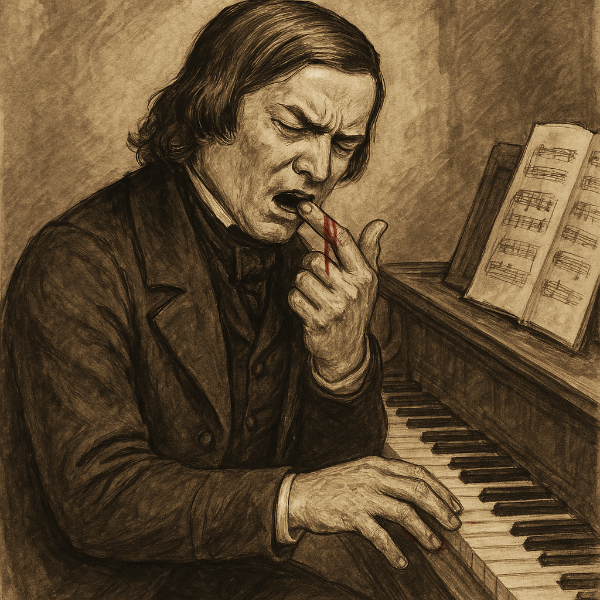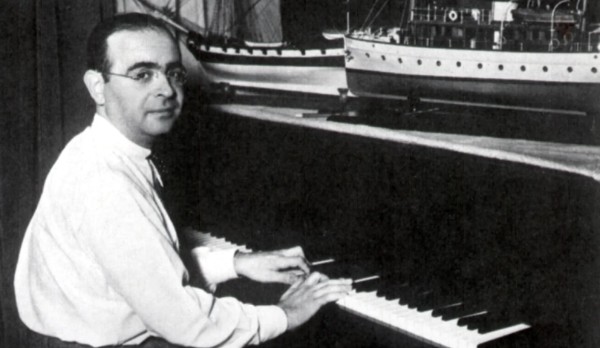In looking at costuming for Rossini’s Il Barbiere di Siviglia, we found some interesting 19th-century interpretations of Figaro himself.
In a production at the Théâtre Royal Italien in 1844, the artist and designer Alexandre Lacauchie put the serenading barber in a striking blue and silver costume, Spanish guitar in hand. The singer is Giorgio Ronconi (1810–1890), an Italian baritone known for his ‘brilliant acting and compelling stage presence’. Reviewers praised his acting, rather than his singing, and his Figaro (along with his Rigoletto) were his top roles.
Gioachino Rossini: Il barbiere di Siviglia (The Barber of Seville) – Overture (Chamber Orchestra of Europe; Claudio Abbado, cond.)

Alexandre Lacauchie: Ronconi in the role of Figaro, 1844 (Gallica ark:/12148/btv1b10541097g)
We can contrast this with a Figaro from 1828 who is even more overdressed for this production at the Théâtre-Italien – Salle Favart. Artist and designer Louise Maleuvre has given him a bow at the neck, ties at his knees, and tassels on his stockings. He also wears a head cap and beribboned hat. The singer is Vincenzo-Felice Santini (1798–1836), an Italian baritone who sang at the Théâtre-Italien from 1828 to 1836.
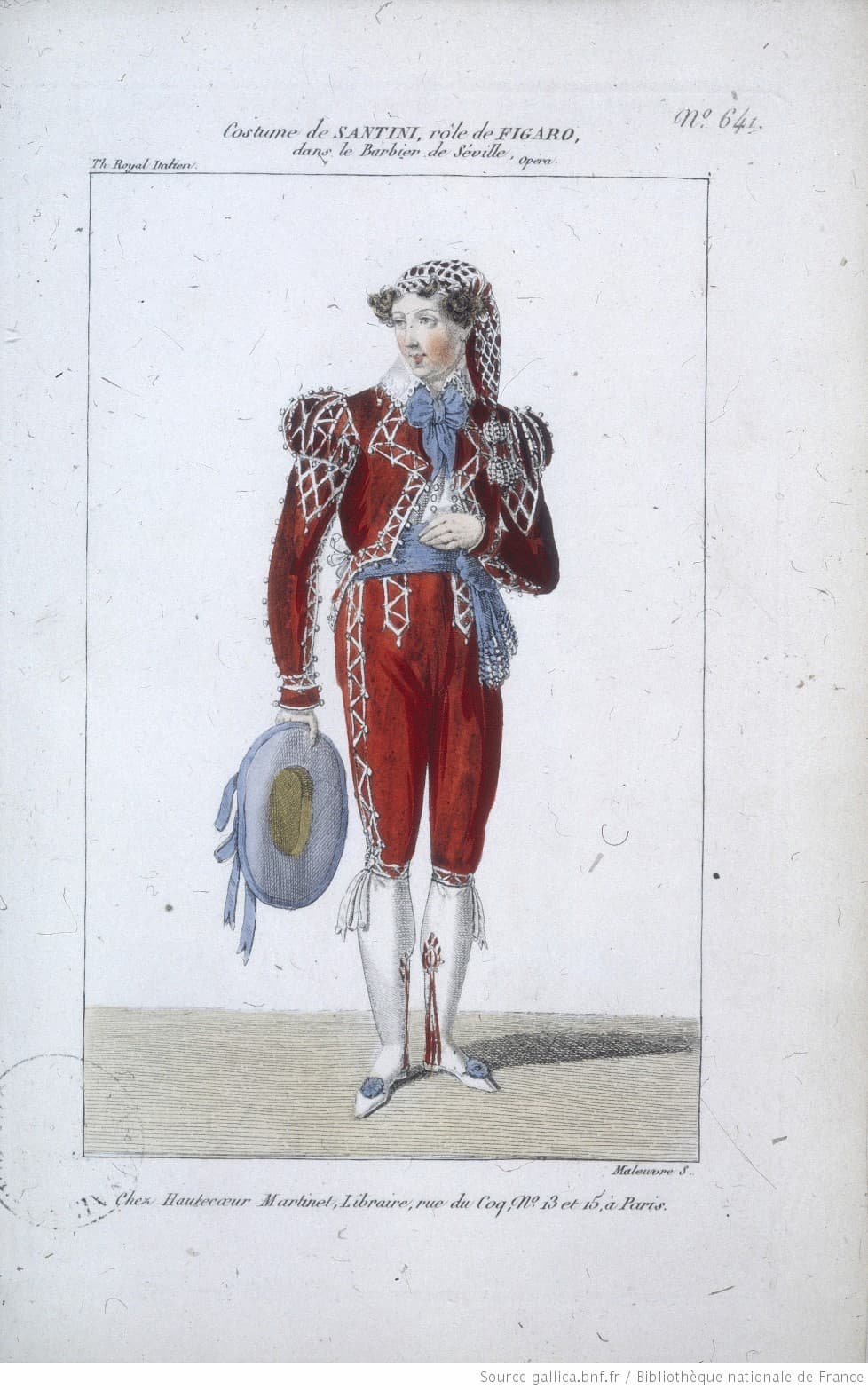
Louis Maleuvre: Costume de Santini, role de Figaro, 1828 (Gallica ark:/12148/btv1b7001587v)
A different Figaro appeared in Victorien Sardou’s Les premières armes de Figaro of 1859, probably based on the same story used by Cesare Sterbini for Rossini’s opera, i.e., Beaumarchais’ 1775 comedy Le Barbier de Séville ou la Précaution inutile (The Barber of Seville or the Useless Precaution)). At the end of Sardou’s Figaro, he was departing to make his fortune in the theatre because he’s been composing an opera…and would be back in 3 months to marry Suzanne. What’s most striking about this Figaro, is that he was played by Virginie Déjazet (1798–1875), who was known for her soubrette roles and her men’s roles, and was considered one of the most famous travesti actors in the early 19th century. Les premières armes de Figaro had its debut in 1859 at the Théâtre Déjazet, owned and managed by Virginie and her son Joseph Eugène Déjazet.
Gioachino Rossini: Il barbiere di Siviglia – Act I: Cavatina: Largo al factotum della citta (Roberto Servile, baritone; Budapest Failoni Chamber Orchestra; Will Humburg, cond.)
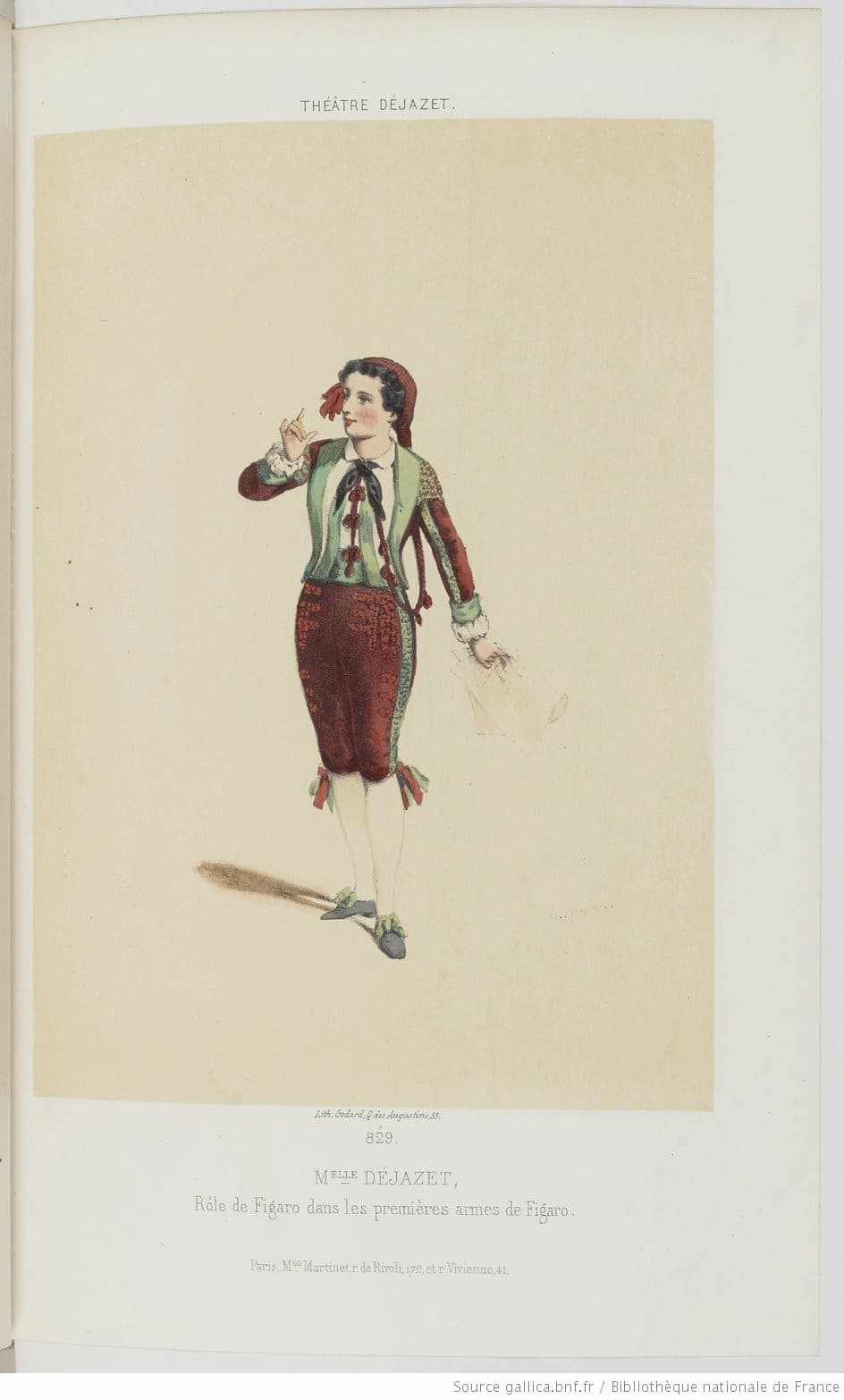
Edmond Morin: M.elle Déjazet, rôle de Figaro, dans Les premières armes de Figaro, 1859 (Théâtre Déjazet)
In modern staging, what remains of these 19th-century precedents?
In this 2006 staging at the Met Opera, our barber still has the head cap, knee pants, but has lost most of the fancy styling given him by Lacauchie and Maleuvre.
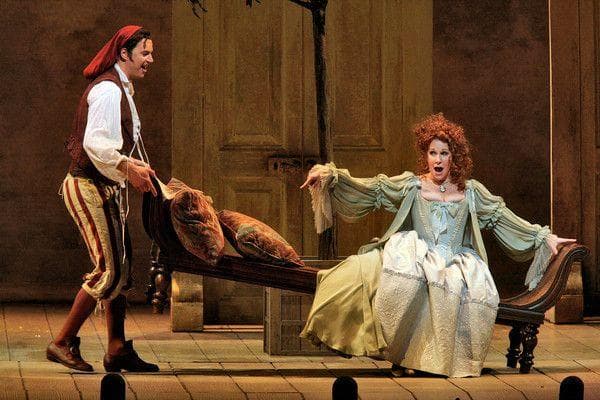
Peter Mattei as Figaro, 2006 (Met Opera)
The Paris Opera production during the 2019–2020 season moves it to the modern age. In this scene, Figaro (with hat) talks to Count Almaviva. All modern clothes in a definite modern setting.
Gioachino Rossini: Il barbiere di Siviglia (The Barber of Seville) (In Hungarian) – Act I Scene 2: Duet: Szoval en, o hiheto-e (Dunque io son) (Rosina, Figaro)
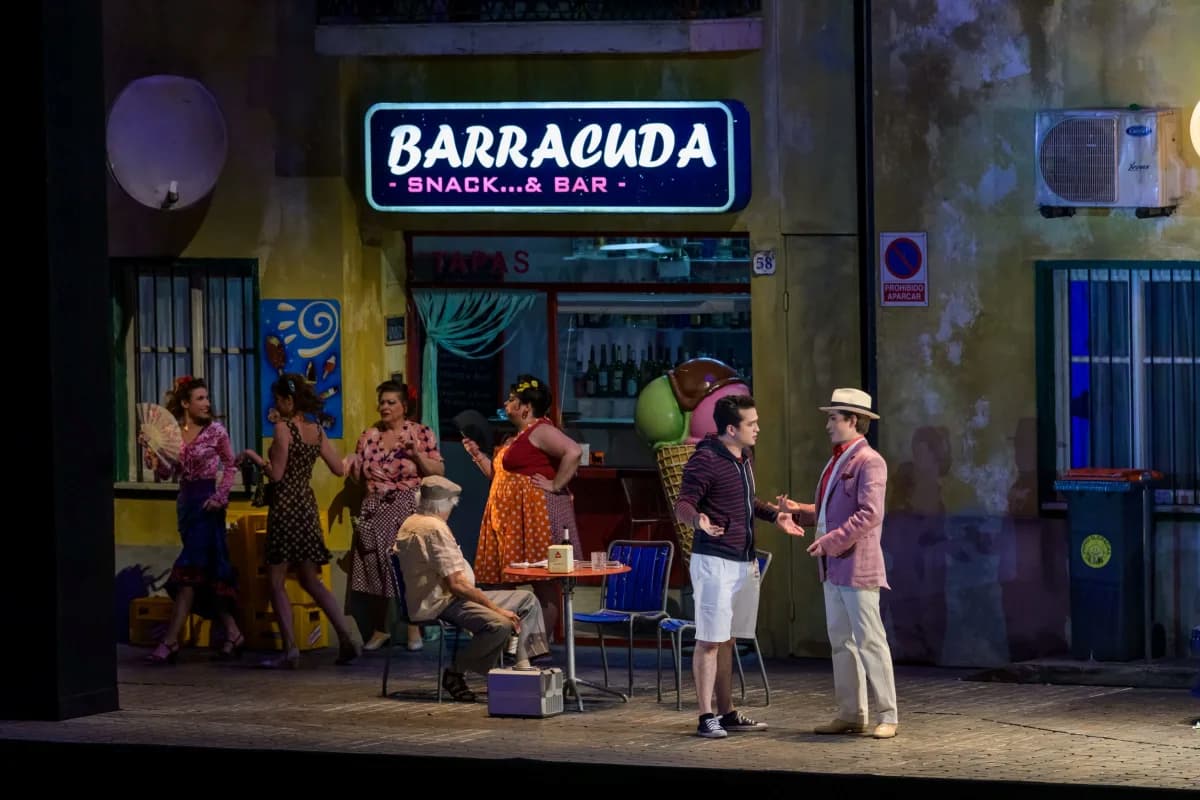
Xabier Anduaga (Almaviva) and Ilya Kutyukhin (Figaro), 2020 (Paris Opera ) (Photo by Charles Duprat)
Welsh National Opera goes for the more traditional look in 2021, with the head cap and knee pants, but with more decoration on his clothing.
Gioachino Rossini: The Barber of Seville (Sung in English) – Act I Scene 2: Cavatina: La la la lera (Alan Opie, Figaro; English National Opera Orchestra; Gabriele Bellini, cond.)
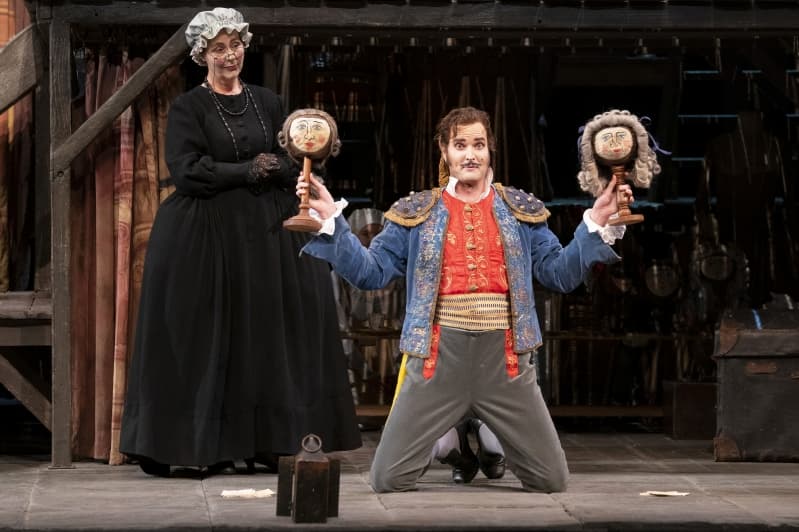
Nicholas Lester as Figaro, 2021 (Welsh National Opera) (photo by Richard-Hubert-Smith)
Paris’ Théâtre des Champs-Élysées’ 2017 production had a Figaro with tattooed arms, visible even when wearing tails.
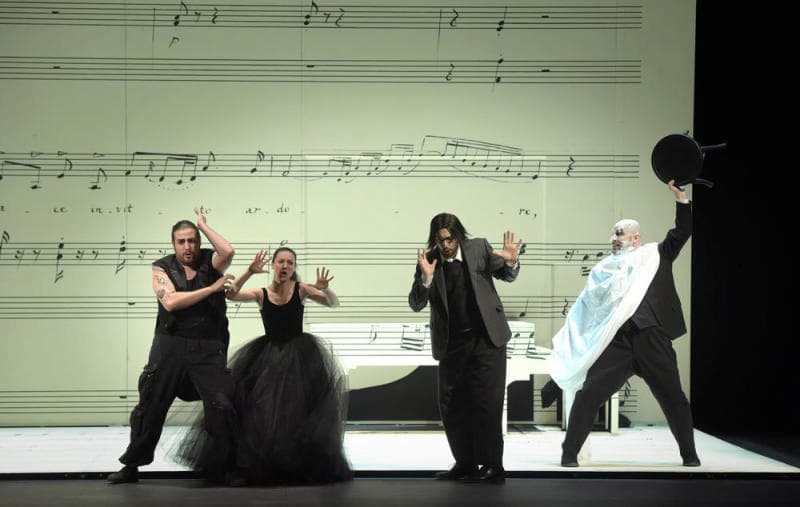
Laurent Pelly as Figaro (left), 2017 (Théâtre des Champs-Élysées) (Photo by Vincent Pontet)
Glyndebourne Opera makes their 2016 Figaro as informal as possible while retaining a hint of the earlier decoration on his clothes.
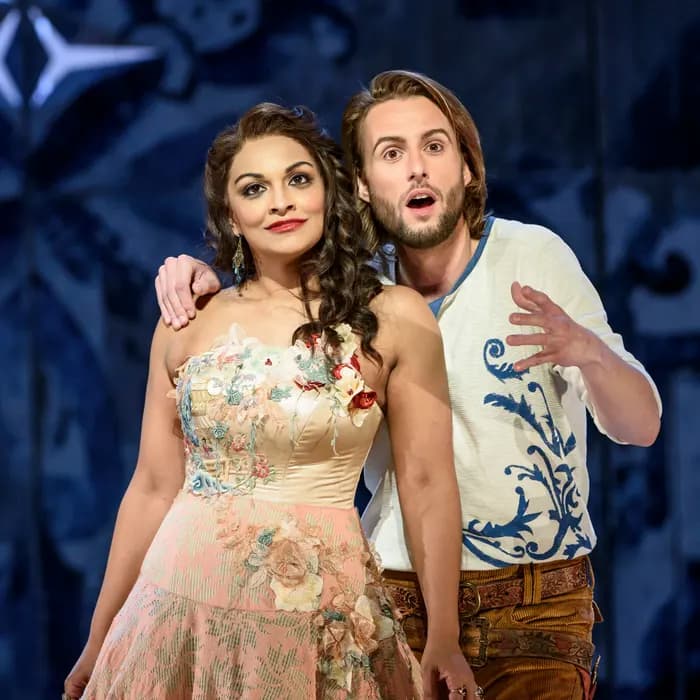
Rosina (Danielle de Niese) and Figaro (Björn Bürger), 2016 (Glyndebourne (Photo by Bill Cooper)
Figaro here….Figaro there…How would you dress your Figaro?
For more of the best in classical music, sign up for our E-Newsletter


